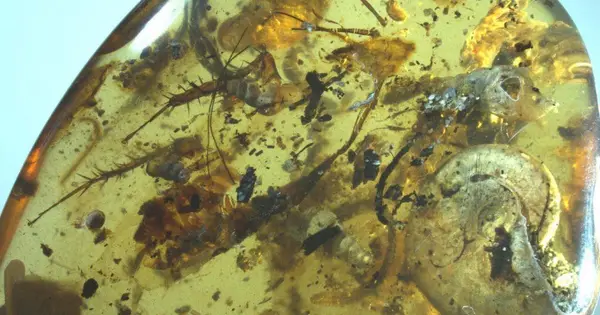
Prehistoric horror: 99-million-year-old ‘zombie’ fungus found bursting from insect heads
How did your country report this? Share your view in the comments.
Diverging Reports Breakdown
Prehistoric horror: 99-million-year-old ‘zombie’ fungus found bursting from insect heads
Fossils of a fly and an ant preserved in 99 million-year-old amber found in Myanmar. The insects were infected with a parasitic fungus known as Ophiocordyceps. The fungus hijacks the bodies of its hosts, ultimately killing them. Even after the host’s death, these parasites continue to puppeteer their victims’ bodies, a bizarre natural phenomenon that inspired the hit TV series ‘Last of Us’ The discovery offers a rare and chilling look at how ancient ecosystems operated — and just how long nature has been perfecting the art of parasitism. The discovery was detailed in a June 11 study in Proceedings of the Royal Society B.
This zombie fungus (and its modern descendants) are parasites that hijack the bodies of their hosts, ultimately killing them. Even after the host’s death, these parasites continue to puppeteer their victims’ bodies, a bizarre natural phenomenon that inspired the hit TV series ‘Last of Us’.
An ancient horror
Two insects — a fly and a juvenile ant — preserved in 99-million-year-old amber from Myanmar have revealed what scientists are calling some of the oldest examples of parasitic “zombie” fungi ever discovered.
The fossils, found in Myanmar’s amber markets, are a rare opportunity for scientists “to visualise the ancient ecological relationships preserved in fossils,” said Yuhui Zhuang, lead author and doctoral researcher at Yunnan University.
One of the fossils, a grotesquely well-preserved one, shows the fruiting bodies of the ancient fungi bursting through the hosts’ heads, frozen mid-invasion.
The discovery, detailed in a June 11 study in Proceedings of the Royal Society B, offers a rare and chilling look at how ancient ecosystems operated — and just how long nature has been perfecting the art of parasitism.
Zhuang and his colleagues identified two new species of parasitic fungus from the Ophiocordyceps genus, infamous today for turning ants into zombified shells. The fossilized fungi were named Paleoophiocordyceps gerontoformicae (on the ant) and Paleoophiocordyceps ironomyiae (on the fly). Researchers used microscopes and 3D micro-CT scans to study the stunning specimens.
The oldest zombies in the forest
Today, modern Ophiocordyceps fungi manipulate the behaviour of insects like carpenter ants — controlling their movements, making them climb high before dying, so the fungus can erupt and spread its spores.
According to the researchers, Paleoophiocordyceps likely functioned in exactly the same way, suggesting that this kind of evolutionary trickery was already in place back in the Cretaceous period — at the height of the dinosaur age.
Zombie fungi’s favourite victim—the ant
“It appears that ants, for some reason, were targeted early for zombification, and currently are the major recipients of this parasitoid fungus,” said Conrad Labandeira, a Smithsonian palaeontologist not involved in the study. Flies are rarely affected today, which makes this fossilized example even more fascinating,” he added.
The infected insects were probably already dead — killed by the fungi — when they were trapped in tree resin, the sticky precursor to amber.
